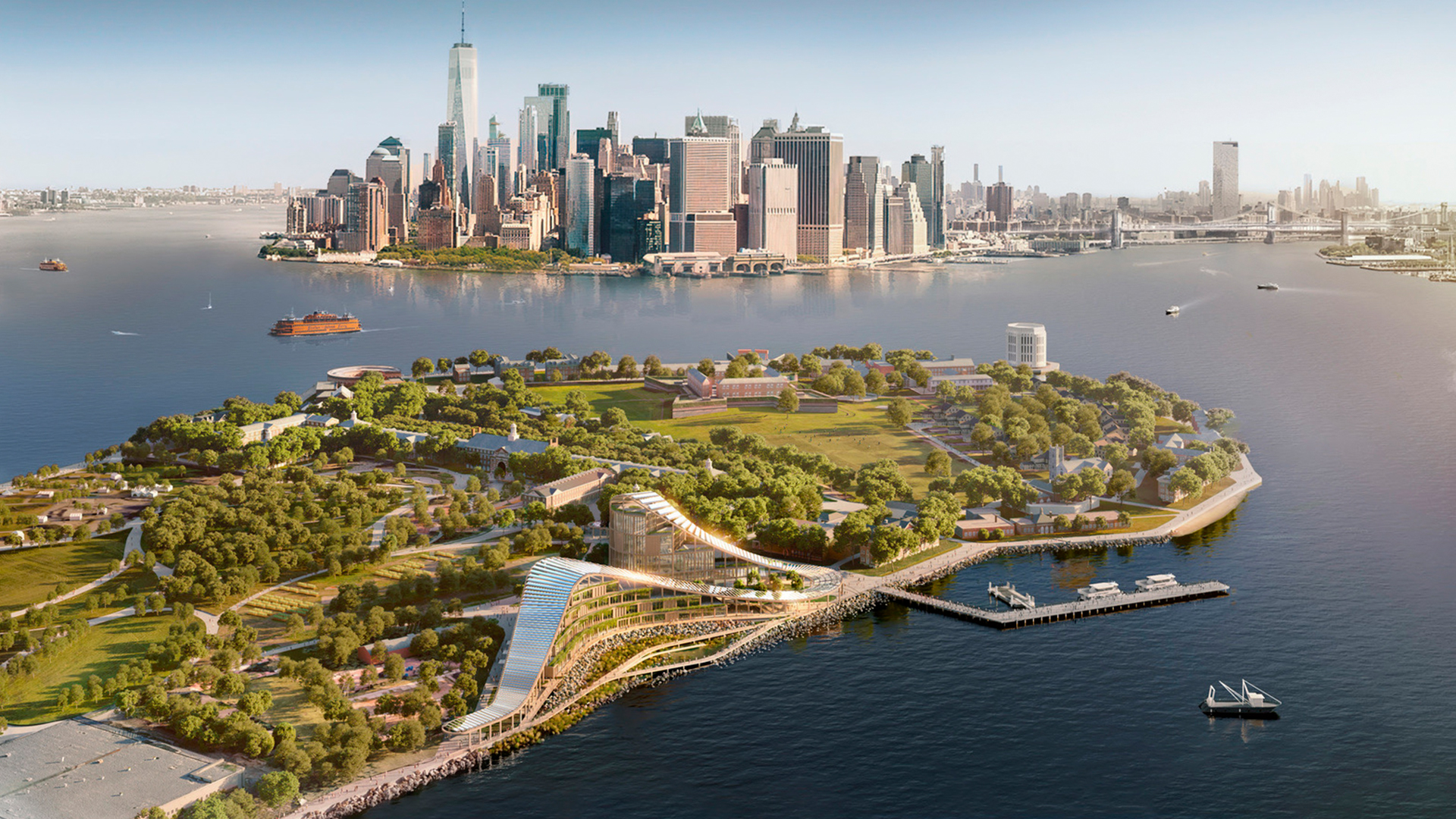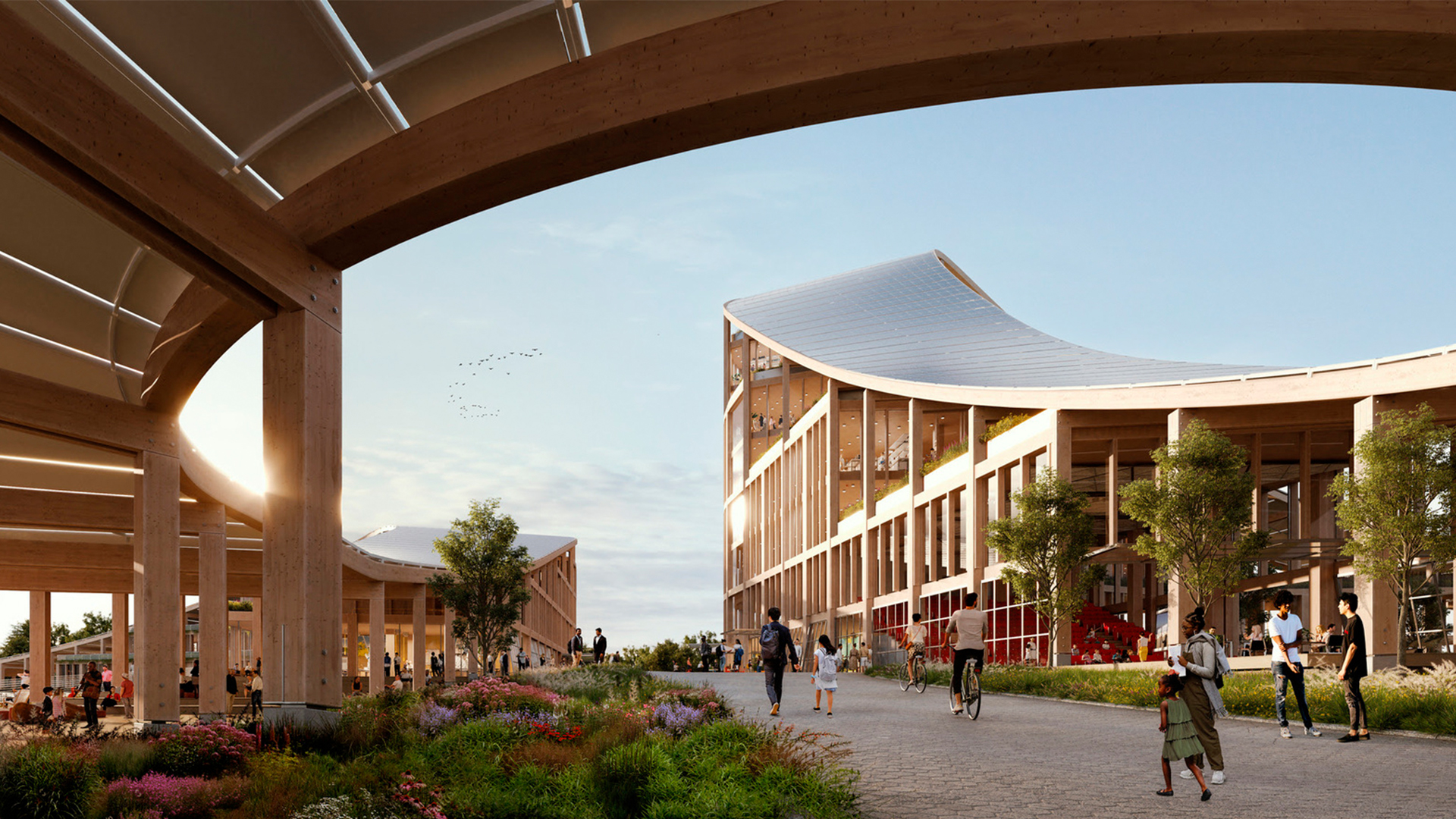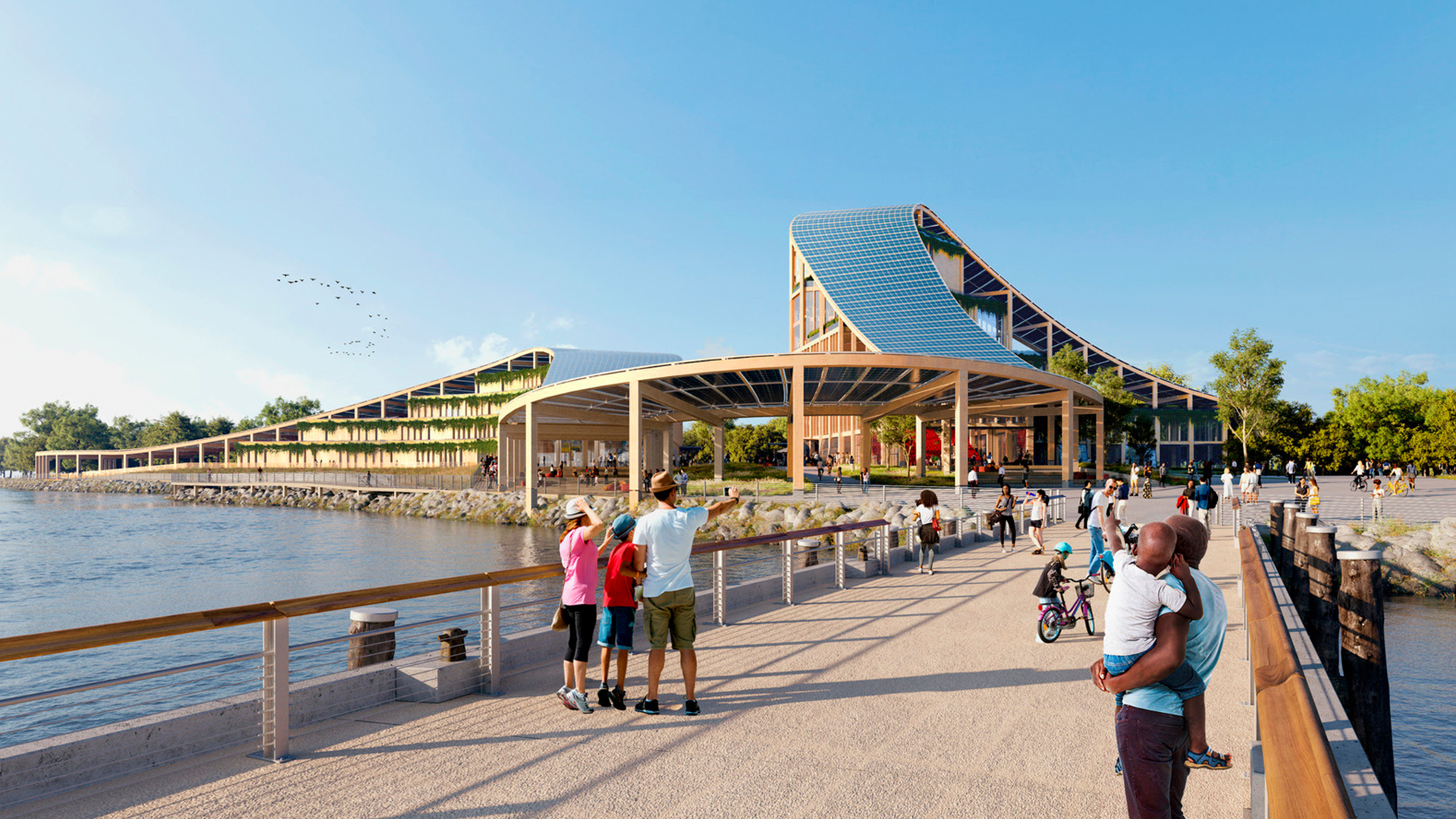
Design for the New York Climate Exchange campus. Image courtesy of SOM | Miysis
New York City is setting a new and ambitious global standard in climate action with its $700m New York Climate Exchange on Governors Island. This 10-acre campus has been designed to accelerate climate solutions on a global scale while addressing New York’s own particular environmental challenges.
The campus has deployed a collaborative construction model, involving over 45 partners from universities, businesses, and non-profit organisations, each bringing its own expertise to build this future-facing climate research centre.
Once completed in 2028, it will serve as a global centre for climate research, education, and workforce training. By hosting climate researchers, students, and academics, the Exchange hopes to create a new generation of surveyors, engineers, architects and construction professionals who are equipped to tackle the ongoing challenges of climate change.
The campus will offer programmes that provide hands-on experience with cutting-edge sustainable practices, making it an invaluable resource for climate education. Among these are the Waterfront Alliance, which builds, restores and protects waterfront access for all, and Earth Matter NY, nonprofit organisation dedicated to advancing the knowledge and practices of composting around New York City.
“The way I frame it is all climate, all the time,” said Dr Stephen Hammer, CEO of the Climate Exchange, in a CBS News interview.
What will it look like?
The Climate Exchange has broken ground on Governors Island and, when finished, will have 230,000ft2 of new buildings alongside 170,000 ft2 of revitalised historic stock. Staying true to its green credentials and ambitions, the campus will use modern sustainability standards alongside historic preservation, using innovative designs and materials that remain true to the island’s character.
Beyond appearances, every aspect of the campus is aiming for net-zero energy, water, waste and carbon – an ambitious benchmark that could help redefine urban sustainability expectations.

Render of where the Climate Exchange will be built on Governors Island (curved building on near side). Photo courtesy of SOM | Miysis
Can it live up to its own green ambitions?
While aiming to help the world face the effects of the climate crisis, the New York Climate Exchange is itself engineered for resilience. As climate risks like sea-level rise intensify, the campus is being built with ground floor levels raised above the floodplain, reducing its vulnerability to future flooding events.
Sustainable construction techniques – including mass timber and the adaptive re-use of historic structures – further support the centre’s climate credentials by minimising its embodied carbon and extending the life of existing structures on the island. The campus also plans to generate its own electricity on-site, aiming for true energy independence.
The campus is building towards the Living Building Challenge certification, which emphasises not just energy efficiency, but ‘holistic sustainability’, from water use to materials sourcing.

A planned section of the campus. Image courtesy of SOM | Brick Visual
What impact will it have on New York City?
The economic and environmental impacts of the New York Climate Exchange are projected to be substantial. Economically, the initiative is expected to create around 7,000 jobs and contribute an estimated $1bn to the city’s economy, bringing in a much needed boost for the green sector in New York.
They’re already working on climate literacy for children in New York – helping to equip classrooms and teachers with the knowledge to think about addressing climate challenges.

Walkway leading to the campus. Image courtesy of SOM | Brick Visual
What can we learn from the construction of the Exchange?
For surveyors and construction professionals, the New York Climate Exchange is a case study in blending old and new within a manageably sustainable framework. By integrating new buildings with existing historic structures for a tech-first campus it is pushing the boundaries of adaptive re-use in an island setting.
The location itself poses challenges in flood resilience and green infrastructure, making it a compelling example for surveyors interested in sustainable building practices and climate adaptation.
As the role of climate-focused development increases, the demand for expertise in green building and resilient design is expected to grow. The New York Climate Exchange offers the chance to show how sustainable, resilient projects like this could become the new construction norm.
The world’s greenest universities
Study International has selected the world’s greenest universities, based on the sustainable practices they have adopted. These practices include reduced energy consumption, a focus on waste reduction and integrating sustainability into their academic programmes.
Scroll down to see five of the institutions highlighted:


